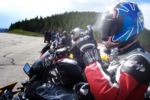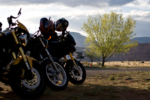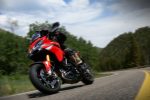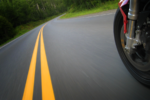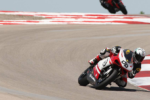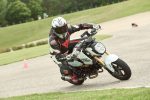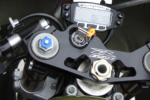One Exercise Changed Everything
Over the years there have been three specific things that fundamentally improved my riding in a dramatic way. The first was learning how far I needed to look down the road, what I needed to be looking at and looking for. Using vision as a way to slow down time, time that is used to make a plan for every corner or busy intersections and what have you, has transformed my riding.
The second was opening my mind to trail braking and slowing into corners until I was comfortable with my speed and direction. I’ve talked about this at length in other videos, but in short, I was about to give up on riding until I was introduced to trail braking and that single riding technique enhanced my joy of riding in ways that are hard to quantify and I can’t imagine riding without it.
I’m as guilty of this as anyone for this, but our sport tends to focus on techniques a lot and neglects training. Without training we have an arduous learning curve. Training speeds up and shortens our learning curve. We gotta’ always keep in mind that the consequences of our sport are extremely high. It’s possible we may not survive a mistake without an injury, and it’s possible we may not have the opportunity to learn from a mistake if things go really wrong.
To become great, we first have to be good; and it can be hard or discouraging to be on a plateau. Plateau stages of learning last the longest and it can be very discouraging to feel like we’re not actively improving, but the longer we work at something the better we’ll get. That means we need to train, and the training that changed everything for me was mountain biking.
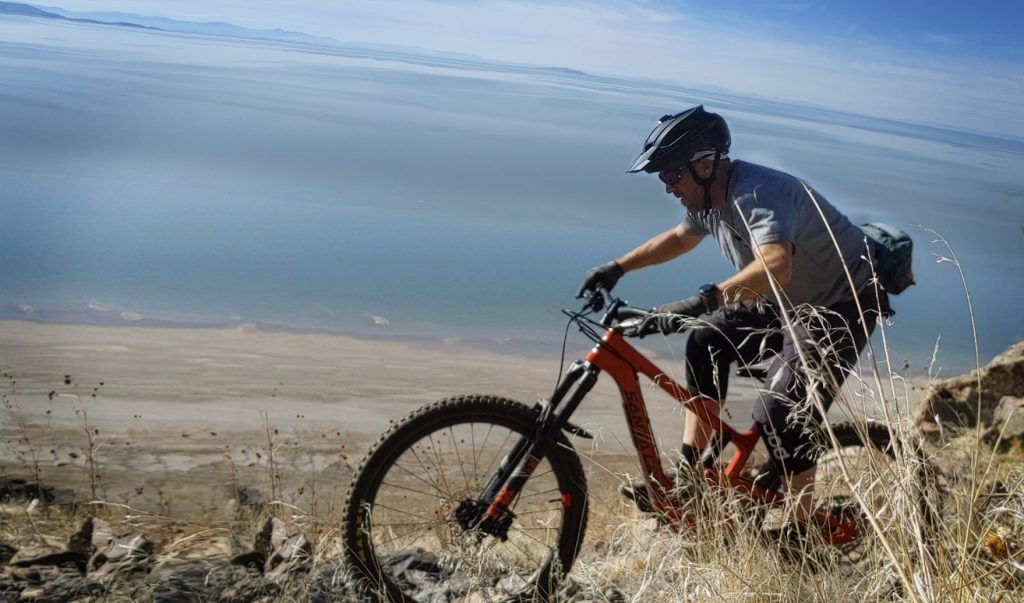
Yeah, yeah, yeah. I know. Every bicycle I’ve ever ridden is terribly underpowered, but I have a confession to make. I love mountain bikes – every bit as much as I love motorcycles. It basically scratches the same itch for me. I even raced mountain bikes in the late ‘80s and into the ‘90s when suspension was a brand new idea and most mountain bikes were just touring bikes with wide tires. But just like motorcycles have seen incredible evolution in the last thirty years, so have mountain bikes.
A modern mountain bike is nothing like that old Rock Hopper hanging in your dads garage. Modern mountain bikes are a marvel. Modern geometry, four piston hydraulic brakes with semi-floating rotors, tubeless tires and suspension with actual, functional adjusters for high and low speed compression and rebound damping. In other words, the modern mountain bike behaves almost exactly like the modern motorcycle.
Mountain biking helps to speed up that learning curve. So, to speed up our riding learning curve, we want to be able to approach the limits of a bike. And you will be shocked with how afraid we can be of a bike with zero horsepower and only one people-power. But it’s a lot easier to reach the bicycles limit than it is to reach the limit on a superbike. The advantages abound. There is simply, less speed involved and thus, less risk. Sure, you can still get plenty hurt on a mountain bike, so we want to wear appropriate gear, especially knee pads.
Fitness
First and foremost, and probably most obvious, lets talk about simple physical fitness. So, yeah, I ain’t gettin’ no younger. I’m heading into my fifth decade and lets just say, things really slow down the older you get. Fitness leaves as quickly as aches and pain sneak in. But I hate, like really, really hate going to the gym despite the difference in how well (or badly) I ride is intimately connected to how fit I am.
The physical benefits provided by bicycles are so well understood that virtually every pro racer participates in some form of cycling. But where a mountain bike, I think, is better than a road bike is how often mountain biking feels like play; not like work. Plus, unlike a road bike, a mountain bike requires a fair bit of upper body strength, where road bikes, uhm… don’t.
I’ve worked with several riders struggling to get faster, reluctant to address the fact that in order to get better, they needed to improve their fitness level. Not only does it enhance leg strength and cardiovascular strength, riding a bicycle teaches us to learn how to think clearly when physically exhausted, or at the very least learn what exhausting feels like and when we need to rest and recover before getting hurt.
More Ride Time/Opportunity
Now, we’re based in a pretty awesome place surrounded by mountains and canyon roads, but if I want to go for a ride after work, I’ll have to deal with commuter traffic, sure, but there are really only four roads worth riding within the time I have available before the sun goes down. Give me the entire day and I can stretch the number of available rides to about eight or nine. How many times can I ride those same roads? And, even with as much track access I get, thats still only seven or eight track days a year.
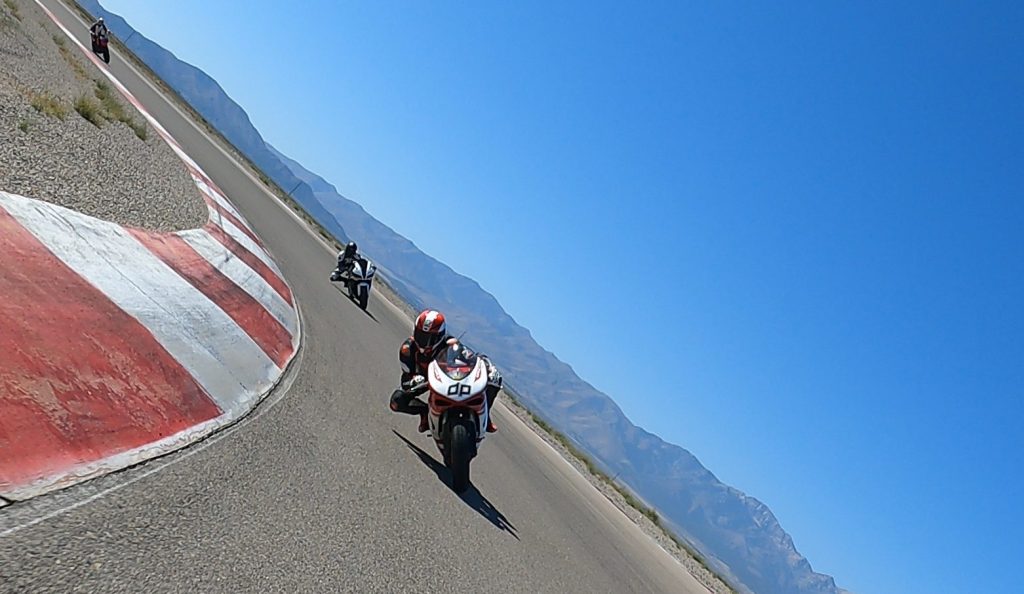
But with mountain biking I have access to literally thousands of trails, all of which can be networked and connected in a myriad of different ways. I can ride almost every day after work for a month and never do the same route twice. This year alone, I have almost 100 days where I rode a bicycle.
By putting the language of our street or pavement riding into the dirt… entrances, apexes, exits, trail braking, finding and respecting the slowest part of the turn. Putting that language into a low grip environment gives us a lot of opportunities to practice.
So a great way to speed up that learning curve, get through those plateau’s of learning quicker, is just being able to train with something that is more accessible. Being able to spend more time in an environment where we can work on and hone our riding skills more often.
Practicing in a Low Grip Environment
Now, what does it feel like when your tires are on the edge of grip? What does it feel like when a tire starts to slide? How can you tell if its the front or rear tire? What do you do when the rear tire starts to slip? What do you do when the front tire starts to slip? How do we, as riders, get the point where we don’t panic when slip happens?
And here’s the truly great thing about dirt. Practicing, or playing in a low-grip environment; we’ll learn more environments, and learn how to adapt faster. It enhances our sense of grip, the feeling of traction. And then learning how to manipulate traction – front brake, rear brake. You want to get good at front end feel? Go get good at front end feel on the trail. Go work on front end feel when you don’t have a ton of grip and you’re not going 100 kilometers an hour. Go learn what the front tire working feels like; when getting it wrong has much, much lower consequences.
Listen, I’d way rather get it wrong going 10k’s per hour on a 15kilo mountain bike than when I’m going 100k’s per hour on a 250 kilo motorcycle. What we can accomplish on the dirt, in less time and how that translates back to the asphalt, again, helps us shortcut that learning curve.
Braking
Now, as soon as we point our bicycle down a hill a few things become abundantly clear. First, there’s no way to get safely down the mountain without your front brake. Second, when you progressively load your front tire, it’s insane how much grip the front tire will provide, even over dry, crumbly, dusty, muddy or otherwise slippery conditions. You’ll be shocked by how much grip a front tire has, even in the dirt, when we apply the brakes correctly.
Mountain Bikes give us incredible opportunities to work on our braking when their isn’t much grip, it’s bumpy, it’s steep and there are obstacles that we have to navigate around… Nothing has enhanced my mastery and understanding of the front brake like the humble mountain bike.
Bumps. Well, bumps are everywhere and the mountain bike teaches us how to become comfortable with feeling the suspension move beneath us in corners as we load and work the front tire. The mountain bike will also teach you how compression damping feels different from rebound damping compared to pre-load.
Exercise our Eyes
But, it’s also taught me the value of being conservative with my corner entrance and mid-corner speeds. When we overcook corners on the street, we can often get away with it. In the dirt, we’ll fall. Mountain bikes have really taught me how, if I’m patient, and I wait… I can make up a lot of speed on corner exit with a lot less risk than trying to make up speed going into corners, because almost every corner on a fun trail is a blind corner.
There are so many hazards. things pulling our eyes down. Like roots, and rocks, or tree’s growing into the trail… Because lets not forget the trails are often barely as wide as our handlebars. So, it becomes an amazing opportunity to exercise our eyes. To keep our eyes moving, not fixating on a single hazard or feature. Practice seeing everything but looking at nothing. Looking past those hazards to find our entrances and apexes, figure out our brake timing, scanning for when we can see out of the corner. And because so much is happening so quickly, we learn how to still use our eyes when they’re tired.
Wintertime – Always being Bike-fit
Now, what if you live in a land of ice and snow where the rivers freeze and the canyons close? Well, there’s a bike for that. Mickey Mouse looking Fat Bikes with five inch tires running 0.3 bar (5psi) of air pressure, trundle and bumble along the snow giving even more low-traction practice because, riding on snow, traction is more of a concept than a reliable reality. Fat bikes, and riding on snow takes everything to expert level but with even a significantly lower exposure to risk. I’m not kidding, you have to pedal to go downhill on a Fat Bike.
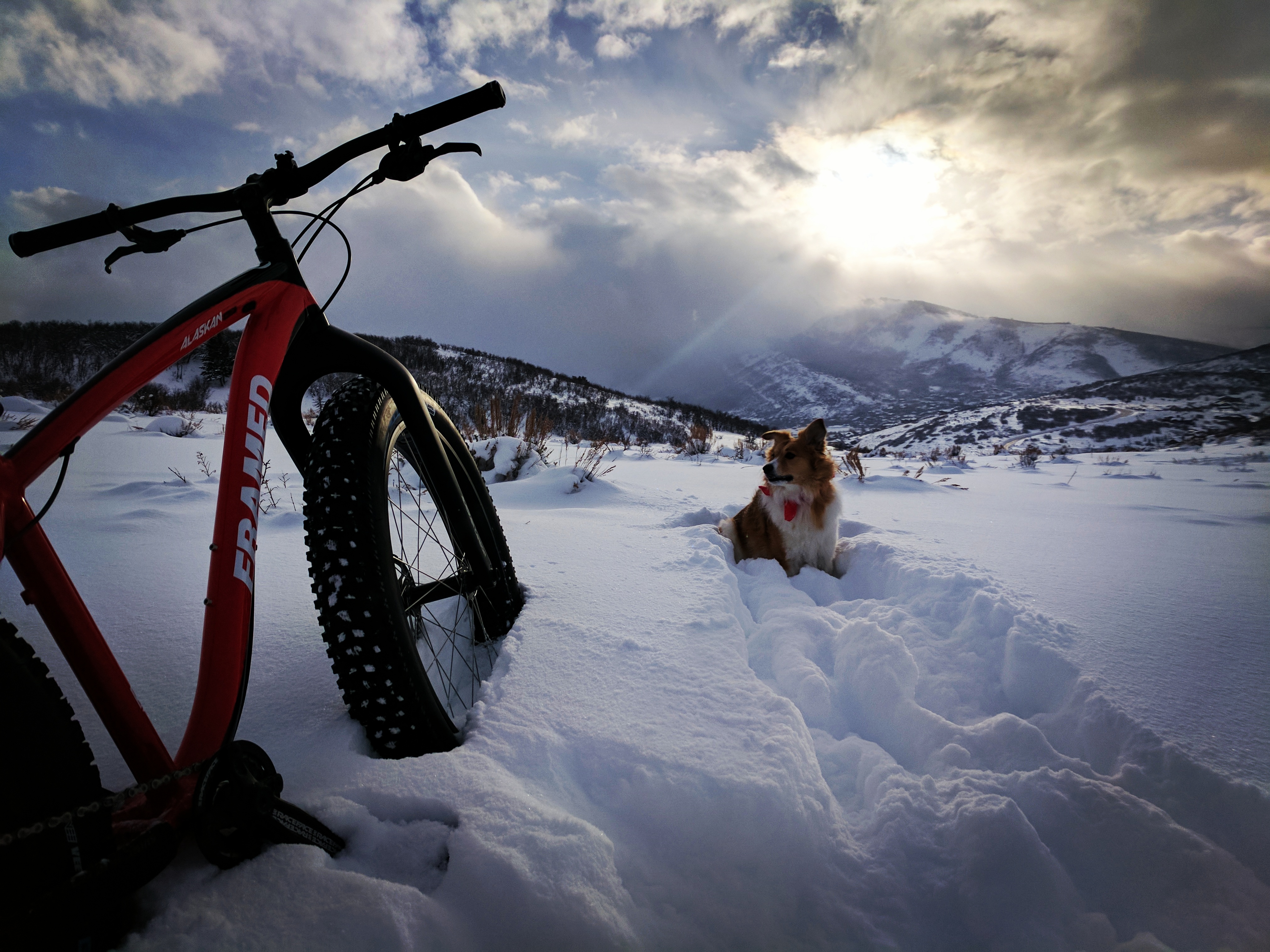
The other advantage is that we can be on a bike year round. Always be “bike fit” while continuing to practice our craft, training to become the best rider we can be, training to shorten that learning curve, rather than sipping bourbon next to the fireplace binge watching television for half the year.
Flow Trails
And finally, if you’ve not been paying attention, there are these new things called flow trails that are as joyful as some of the best race tracks I’ve ever had the pleasure to ride. So talk about translating street language to trail language – and did I mention these dirt-berm racetracks through the tree’s are all over the place.
Summary
Depending on where you are in the world, your bicycle brakes might be on the wrong side of the handlebars. I’m looking at you America – the front brake belongs on the right – just like a motorcycle, a scooter, an ATV… so you know, you may want to swap those brakes and put the front brake back where it belongs because we’re training tho shorten that learning curve. We want to build good muscle memory – we want to enhance our riding skills cross-platform.
Look, I love two wheels. I love the whole lateral lean thing, and the mountain bike, well, I get to spend more time on two wheels in lots of different environments. And every one of those rides, I’m getting all the same things I love about motorcycles. I’m getting my turns in. Refining my riding skills, especially trail braking. I’m exploring the world around me, watching the sun filter through the tree’s, seeing epic scenery evolve through the seasons. I’m being a part of the world around me, not just an observer. I’m polishing all of my riding skills with every corner and every stop and every tire slip. I’m getting stronger each time I ride. I’m learning how to use my eyes better, and not to use my arms too much, because they get tired. So I’m forced to use my legs more, engage my core, enhance my motor control and my balance; and at the same time, its so much fun… And, on those short, mellow, slow rides, I can ride with my dog.
